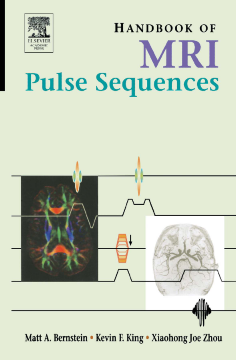
Additional Information
Book Details
Abstract
Magnetic Resonance Imaging (MRI) is among the most important medical imaging techniques available today. There is an installed base of approximately 15,000 MRI scanners worldwide. Each of these scanners is capable of running many different "pulse sequences", which are governed by physics and engineering principles, and implemented by software programs that control the MRI hardware. To utilize an MRI scanner to the fullest extent, a conceptual understanding of its pulse sequences is crucial. Handbook of MRI Pulse Sequences offers a complete guide that can help the scientists, engineers, clinicians, and technologists in the field of MRI understand and better employ their scanner.
- Explains pulse sequences, their components, and the associated image reconstruction methods commonly used in MRI
- Provides self-contained sections for individual techniques
- Can be used as a quick reference guide or as a resource for deeper study
- Includes both non-mathematical and mathematical descriptions
- Contains numerous figures, tables, references, and worked example problems
"...I believe it will become the 'gold standard' text for people involved in MR research or applications because of its clear and concise descriptions of most aspects of MRI."
--Michael Jacobs, Johns Hopkins School of Medicine, Baltimore, Maryland in the JOURNAL OF MAGNETIC RESONANCE IMAGING (2006)
“…an outstanding reference source that covers all the important aspects of pulse sequence design and implementation. --G.H. Glover, Stanford University School of Medicine, CA, in NMR IN BIOMEDICINE (2005)
“Anyone conducting research that makes use of the current state of MRI techniques should have this book on the shelf. --MEDICAL PHYSICS (May 2005)
Excerpts from the forewords of this book:
“…This book is the most valiant and successful attempt yet to provide a useful description of this [pulse sequence] ‘zoo’, and to relate and classify the various denizens in it. … I believe that no MRI developer or user can read this book without learning more about the field, as I have.
--From the foreword by Paul C. Lauterbur, Ph.D., 2003 Nobel Laureate in Physiology or Medicine, Professor of Chemistry, Biophysics, Bioengineering, and Medical Information Sciences, University of Illinois.
“…This book will become one of the classic texts in the field. It will play a key role in helping the next generation of scientists and MRI clinicians to continue the process of invention.
--From the foreword by Richard L. Ehman, M.D., Professor of Radiology, Mayo Clinic
